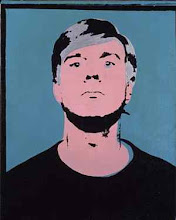 |
| Franz Kline, Vawdavitch, 1955 |
It is hard, now, to imagine the impact of the exhibition New American Painting at the Tate
Gallery in 1959 – it was the first significant showcase in this country of the
work of the Abstract Expressionists. It must have been both exhilarating and
bewildering: it received both admiration and derision. British abstract painters
such as Basil Beattie and the late Albert Irvin have attested to its revelatory
effect. Remarkably this is the first large scale survey of the movement since
that exhibition more than 50 years ago. So this is very exciting!
(There have, of course, been recent major surveys of individuals such
as Jackson Pollock and Mark Rothko – but this is a wonderful opportunity to see
the richly varied work of this school of artists all together and it includes some
who have been little seen in the UK, for example, Joan Mitchell and Clyfford Still.)
The 1959 exhibition was organised by the Museum of Modern Art, New York
and toured to several locations in Europe. Although it was met with some scepticism
– one French critic asked ‘Why do they think they are painters?’ (1) it helped
to cement the reputations of the Abstract Expressionists and decisively
established New York as the capital of modern art in place of Paris. Whether or
not one takes seriously the promotion of this art movement as American state
sponsored (CIA) propaganda and an instrument in the Cold War (the
individualistic, advanced, abstract art was proposed as an emblem of freedom
and democracy in telling contrast to the rigid, rule bound sterility of
Socialist Realism) the scale and daring of Abstract Expressionism at its best
can be truly thrilling.
All the major names are in the show – Arshile Gorky, Willem de Kooning,
Mark Rothko, Franz Kline, David Smith, Jackson Pollock, Barnett Newman, Ad
Reinhardt, Joan Mitchell, Philip Guston – and more. Highlights include
Pollock’s Mural (which I was lucky
enough to see in Berlin earlier this year, see below) and Blue Poles – this painting generally gets a big thumbs up from
critics (Laura Cumming: ‘magnificent’; Mark Hudson: ‘stunning’) yet in a filmed
interview made for the OU in 1982 Clement Greenberg (the key critical voice
supporting Pollock) says “Blue Poles
was a failure – as Jackson himself recognised”. I am also looking forward to
seeing Joan Mitchell’s work, since I can’t recall ever having seen any before, and
Clyfford Still’s paintings. I knows Still’s work principally from a solitary (I
think) example in the Tate and through reproductions – obviously this is not a
good basis for judgement, yet I have always been rather dismissive of what looks
to me as rather banal work lacking the subtlety, elegance or invention of his
peers – yet he is written about with considerable respect and is substantially
represented in this show. I look forward to forming a more considered judgement!
Read reviews by Waldemar Januszczak, Laura Cumming, Adrian Searle, Mark Hudson; read a feature article by John-Paul Stonnard.
(1) Erika Doss (2002) Twentieth Century American Art, OUP, p127
(2) Open University (1982) Greenberg on Pollock: Interviewed by T.J. Clark, OU/BBC
(Click on images to enlarge.)
 |
| Jackson Pollock, Male and Female, 1942-43 |
 |
| Arshile Gorky, Water of the Flowery Mill, 1944 |
 |
| David Smith, Star Cage, 1950 |
 |
| Willem de Kooning, Woman II, 1952 |
 |
| Jackson Pollock, Blue Poles, 1952 (detail) |
 |
| Mark Rothko, Yellow Band, 1956 |
 |
| Willem de Kooning, ...Whose Name was Writ in Water, 1975 |
 |
| Joan Mitchell, Salut Tom, 1979 |
 |
| Installation view of works by Clyfford Still |












No comments:
Post a Comment